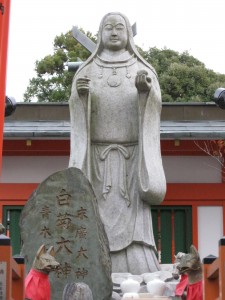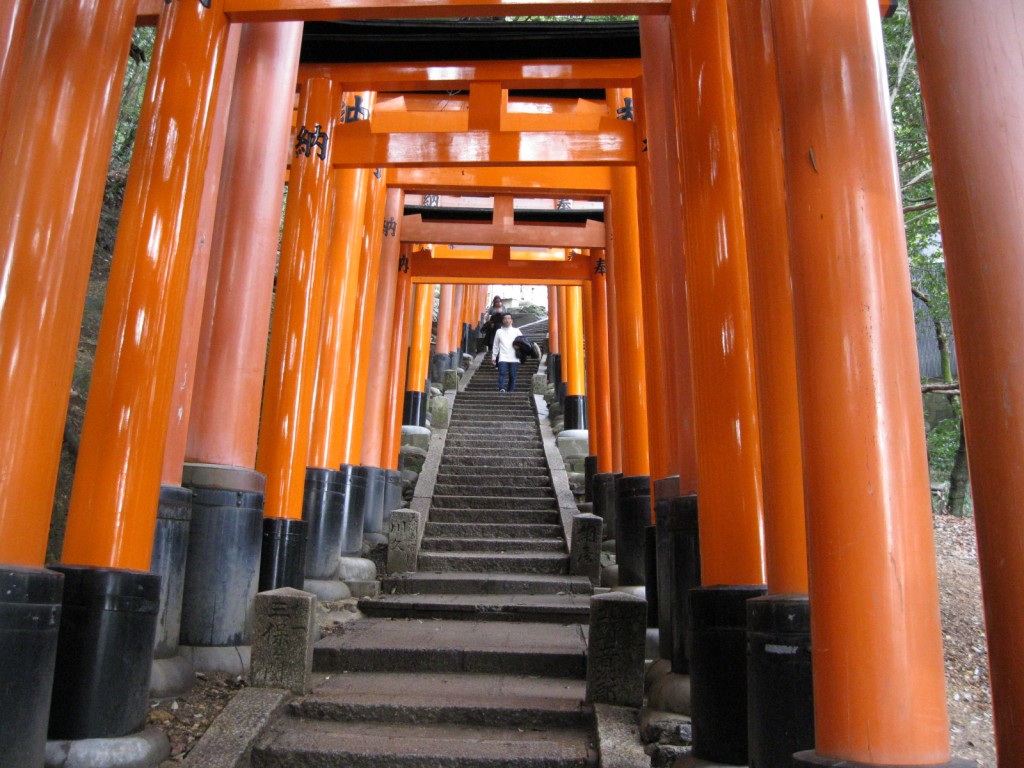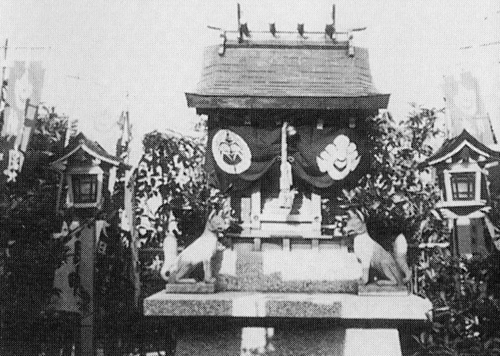 There are several reasons for thinking that Inari may be the most suitable kami for spreading to the West. Of the three most common kami in Japan – Hachiman, Tenjin and Inari – Inari okami is most clearly animist in nature. The kami’s association with fertility has a universal orientation, moreover the male-female ambivalence fits in nicely with neo-pagan strivings for gender balance (Inari traditionally manifests either as a young woman or an old man).
There are several reasons for thinking that Inari may be the most suitable kami for spreading to the West. Of the three most common kami in Japan – Hachiman, Tenjin and Inari – Inari okami is most clearly animist in nature. The kami’s association with fertility has a universal orientation, moreover the male-female ambivalence fits in nicely with neo-pagan strivings for gender balance (Inari traditionally manifests either as a young woman or an old man).
At the head of the Inari shrines stands Fushimi Inari in Kyoto. It is not a member of Jinja Honcho for reasons that are unclear, though according to some sources it’s because the shrine does not recognise the primacy placed by the organisation on Ise Jingu. (As Teeuwen and Breen pointed out in their New History of Shinto, the financial emphasis on Ise is to the detriment of other shrines.)
The Inari information below is adapted from a website entitled “Musings of an Ujiko”. On October 26th, 2013, the website owner formally enshrined a ‘divided spirit’ (wake-mitama) from Fushimi Inari Taisha. The resulting shrine is hoped to be the nucleus of an Inari association and marks an important step in what could prove the spread of Inari worship to the West.
**********************************************************************************
About Wake-Mitama
There are many Wake-Mitama (“branch spirits”) of Inari Ōkami enshrined not only in Japan, but also overseas in locations where many Japanese live such as Hawaii and Brazil.
Accepting a Wake-Mitama is similar to the way the flame of a sacred lantern is taken to the kamidana of individual homes. Its sacred virtues are identical to those of the “parent kami* enshrined at the main shrine. Unlike an ofuda (talisman), the Wake-Mitama is a goshintai [sacred body of the kami], so it must be enshrined with the utmost care. Furthermore, it is always accompanied by a certificate (proving that it was accepted from the head shrine, Fushimi Inari Taisha).
How to enshrine a Wake-mitama
There are two ways to enshrine a Wake-Mitama: either in a kamidana inside a building, or in shrine grounds or other property.
As for the direction the shrine faces, south or east is considered best, but this is not absolutely necessary. The important thing is that the location selected be clean and appropriate for the execution of morning and evening worship and other rites.
In addition, the shrine or hokora should be placed such that it will be above eye level when worship rituals are performed.
The Wake-mitama is to be placed inside a shrine or hokora. The doors should be kept shut, except once or twice a year when they are opened for taisai (major festival) rites. Even at such times, however, a bamboo screen or curtain should be fixed inside the doors so that the Omitama is not directly visible.
****************************************************
For more details, please visit the website of Musings of an Ujiko. For a personal account of how the website owner came to Inari worship from Wicca paganism, click here.
For more about Fushimi Inari, please see here.

The torii tunnel at Fushimi Inari that leads from the shrine up and around the hill, providing a small pilgrimage route involving rebirth and renewal from the forces of nature


Leave a Reply